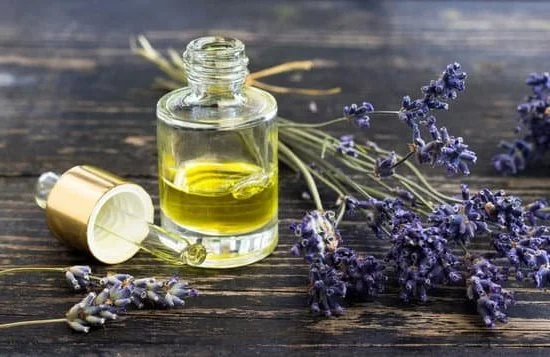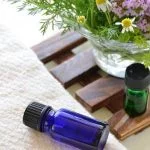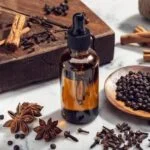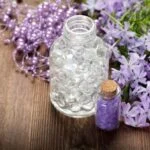Aromatherapy massage oil is a wonderful addition to any self-care routine, offering an array of benefits for both the body and mind. In this article, we will explore how to make your own aromatherapy massage oil and delve into the rejuvenating effects it can have on your overall well-being.
Aromatherapy is the practice of using essential oils derived from plants to promote relaxation, reduce stress, and enhance emotional well-being. When combined with massage, these oils can penetrate deep into the skin, allowing their therapeutic properties to work their magic from within.
One of the key benefits of aromatherapy massage oil is its ability to promote relaxation and reduce anxiety. The aromatic compounds found in essential oils interact with receptors in the brain, triggering the release of chemicals that help calm the nervous system.
As a result, using aromatherapy massage oil during a massage session can help you unwind, destress, and achieve a state of deep relaxation. Additionally, certain essential oils have been found to have mood-enhancing properties, making your massage experience even more enjoyable.
Furthermore, aromatherapy massage oil can provide numerous physical benefits as well. By stimulating blood circulation and lymphatic drainage, regular use of these oils during a massage can improve skin health and tone while also helping to relieve muscle tension and soreness. Depending on the specific essential oils used in your blend, you may experience enhanced pain relief or heightened immune function as well.
In summary, incorporating aromatherapy massage oil into your wellness routine can be incredibly beneficial for both your body and mind. By taking the time to make your own personalized blend with carefully chosen essential oils and carrier oils, you can create a truly rejuvenating experience that enhances not only your physical well-being but also contributes to a sense of inner peace and harmony. So let’s get started on this aromatic journey.
Understanding Aromatherapy
Aromatherapy is a holistic healing treatment that uses natural plant extracts, known as essential oils, to promote physical and emotional well-being. It is believed that the aroma of these essential oils can stimulate brain function and affect mood, memory, and emotions. Understanding the principles behind aromatherapy can help you harness its benefits and incorporate it into your daily life.
Essential oils are highly concentrated extracts obtained from different parts of plants, including flowers, leaves, bark, roots, and fruits. Each oil has its own unique scent and therapeutic properties. When used in aromatherapy massage oil, these essential oils can be absorbed through the skin or inhaled through the nose to provide various benefits.
Aromatherapy works by stimulating smell receptors in the nose, which then send messages to the limbic system – the part of the brain responsible for emotions and memories. This triggers a release of chemicals in the body that can promote relaxation, reduce stress and anxiety, improve sleep quality, boost immune function, ease pain and discomfort, enhance mood, and increase overall well-being.
To incorporate aromatherapy into your massage oil blend effectively, it’s crucial to select essential oils with specific therapeutic qualities that align with your needs. For example:
- Lavender oil is known for its calming properties and can aid in relaxation.
- Eucalyptus oil has a refreshing aroma that can help clear congestion.
- Peppermint oil has invigorating properties and may help ease tension headaches.
By understanding what aromas correspond to certain therapeutic effects, you can create personalized massage oil blends tailored to address your specific concerns or desires for each session. Whether you’re seeking stress relief after a long day or looking to energize yourself in the morning – there is an essential oil combination out there waiting for you.
Choosing the Right Essential Oils
One of the most crucial aspects of creating aromatherapy massage oil is selecting the right essential oils. Essential oils are highly concentrated plant extracts that contain the natural fragrance and therapeutic properties of the plants they are derived from. Each essential oil has its own unique aroma and therapeutic benefits, making it important to choose oils that align with your personal preferences and desired effects.
Determining Your Personal Preferences
Before delving into the world of essential oils, it’s essential to identify your personal preferences when it comes to scents. Consider whether you enjoy floral, citrus, herbal, or woody aromas. You may also want to think about any specific scents that evoke positive emotions or help you relax. By understanding your olfactory preferences, you can focus on choosing essential oils that resonate with you on a deeper level.
Identifying Desired Effects
In addition to personal preference, it’s important to consider the desired effects of the aromatherapy massage oil. Different essential oils have varying therapeutic properties that can enhance relaxation, promote stress relief, alleviate muscle tension, or boost energy levels. For example, lavender essential oil is known for its calming properties and can be beneficial for those seeking relaxation, while peppermint essential oil has invigorating qualities and is often used for revitalization.
Essential Oil Combinations
Once you’ve determined your personal preferences and identified the desired effects, it’s time to explore different combinations of essential oils for your aromatherapy massage oil blend. Some common combinations include lavender and chamomile for relaxation, eucalyptus and rosemary for muscle relief, or orange and bergamot for an uplifting effect. Experiment with different ratios to find a combination that appeals to you and achieves your desired results.
Remember that when using essential oils in massage oil blends, it’s important to dilute them properly in a carrier oil to avoid skin irritation. Additionally, some essential oils may not be suitable for certain individuals, such as pregnant women or those with sensitive skin. It’s always a good idea to consult with a qualified aromatherapist or healthcare professional before using essential oils, especially if you have any specific health concerns or conditions.
Carrier Oils for Aromatherapy Massage Oil
When making aromatherapy massage oil, it is essential to choose the right carrier oil. Carrier oils are used as a base to dilute and carry the essential oils, allowing them to be applied safely to the skin during a massage. Each carrier oil has its own unique properties and benefits, which can contribute to the overall therapeutic experience of the massage.
One popular carrier oil option is sweet almond oil. This light and moisturizing oil is easily absorbed by the skin, making it ideal for massages. It has a subtle scent that does not overpower the aroma of the essential oils used in the blend. Sweet almond oil also contains vitamin E, which helps nourish and protect the skin.
Another common carrier oil choice is jojoba oil. Jojoba oil closely resembles our skin’s natural sebum, making it an excellent option for all skin types, including sensitive or acne-prone skin. It is non-greasy and absorbs readily into the skin, leaving it feeling soft and hydrated. Jojoba oil also has anti-inflammatory properties that can help soothe irritated or inflamed skin.
For those with dry or mature skin, avocado oil may be a suitable choice. Avocado oil is rich in vitamins A, D, and E, as well as fatty acids that nourish and deeply moisturize the skin. Its thicker consistency provides a more emollient feel during a massage while promoting flexibility and elasticity in the skin.
| Carrier Oil | Properties |
|---|---|
| Sweet Almond Oil | Lightweight, moisturizing, easily absorbed, rich in vitamin E. |
| Jojoba Oil | Closely resembles natural sebum, non-greasy, absorbs well, suitable for all skin types. |
| Avocado Oil | Rich and deeply moisturizing, high in vitamins and fatty acids, nourishing for dry or mature skin. |
When choosing a carrier oil for your aromatherapy massage oil blend, consider your skin type and personal preferences. Experimenting with different carrier oils can help you find the one that feels most luxurious and nourishing on your skin. Remember to always use high-quality carrier oils and store them properly to ensure their freshness and effectiveness.
Basic Aromatherapy Massage Oil Recipe
Creating your own aromatherapy massage oil can be a rewarding and enjoyable experience. With just a few simple ingredients, you can customize a blend that caters to your personal preferences and desired effects. This section will provide you with a basic aromatherapy massage oil recipe that is perfect for beginners.
To create a well-balanced massage oil, you will need to use a combination of essential oils and carrier oils. Essential oils are highly concentrated plant extracts that possess unique therapeutic properties. Carrier oils, on the other hand, are vegetable oils that help dilute the potency of essential oils and provide nourishment to the skin.
For this basic recipe, you will need 4 tablespoons of carrier oil. Some popular carrier oils include sweet almond oil, jojoba oil, and coconut oil. It’s important to choose an oil that suits your skin type and preferences. Then, choose your essential oils based on the desired effects you wish to achieve.
A general guideline for creating a well-balanced massage oil is to use approximately 20 drops of essential oil per 4 tablespoons of carrier oil. However, it’s always best to start with fewer drops and gradually increase the amount after doing patch tests to ensure no adverse reactions occur.
To create your blend, simply add the desired number of drops of essential oil into your chosen carrier oil and mix well. Make sure to store your massage oil in a dark-colored glass bottle away from direct sunlight to preserve its potency.
With this simple recipe as a starting point, feel free to experiment with different combinations of essential oils and carrier oils until you find the perfect blend for your aromatherapy massage needs. Remember to always follow safety guidelines when working with essential oils and perform patch tests before applying them directly onto the skin.
Enhancing and Customizing Your Aromatherapy Massage Oil
When it comes to creating your own aromatherapy massage oil, the possibilities are endless. Enhancing your blend with additional ingredients like herbs or floral essences can not only add depth to the aroma but also offer additional therapeutic benefits. Here are some tips and ideas for customizing your aromatherapy massage oil:
1. Herbs: Adding dried herbs to your massage oil can provide added relaxation and healing properties. For example, lavender flowers can promote a sense of calmness and ease stress, while rosemary leaves can invigorate the senses and relieve muscle tension. Simply infuse the carrier oil with your chosen herbs by gently heating them together in a double boiler for several hours. Strain out the herbs before adding essential oils.
2. Floral Essences: Floral essences can elevate the scent profile of your massage oil while providing various therapeutic benefits. Rose petals are known for their aphrodisiac properties and can enhance intimacy during a couples’ massage. Jasmine blossoms, on the other hand, have uplifting properties that can help ease depression and anxiety. To incorporate floral essences into your blend, you can infuse them in carrier oils or use pre-made floral hydrosols.
3. Experiment with Blending: Don’t be afraid to experiment with different combinations of essential oils, carrier oils, herbs, and floral essences to create a personalized blend that suits your preferences and desired effects. Start by blending small amounts of essential oils together before adding them to carrier oils to ensure you achieve the desired aroma profile.
Remember to always consider any allergies or sensitivities when choosing additional ingredients for your custom blend. It’s also important to research the safety guidelines for each ingredient before use to avoid any adverse reactions.
Incorporating additional ingredients into your aromatherapy massage oil can make the experience even more enjoyable and effective. By customizing your blend, you can create a unique aromatherapy experience that caters to your specific needs and preferences. So let your creativity flow and explore the world of herbal combinations and floral essences to enhance your massage oil and take your self-care routine to new heights.
Safety Guidelines and Precautions
When making aromatherapy massage oil, it is important to prioritize safety and follow certain guidelines and precautions. Essential oils are highly concentrated, potent substances that can have adverse effects if not used correctly. To ensure a safe and enjoyable experience, here are some essential safety measures to consider:
1. Proper dilution ratios: Essential oils should always be diluted before applying them to the skin. Undiluted essential oils can cause skin irritation, sensitization, or even burns. The general rule of thumb for dilution is 2-3% concentration in carrier oil. This means adding approximately 10-15 drops of essential oil to every ounce (30 ml) of carrier oil.
2. Avoiding photosensitive oils: Certain essential oils, such as bergamot, grapefruit, lemon, and lime, are photosensitive and can cause skin reactions when exposed to direct sunlight or ultraviolet (UV) rays. It is recommended to avoid using these oils in massage blends if you plan on exposing your skin to sunlight within 24 hours after application.
3. Conducting patch tests: Before using a new essential oil or blend on your body, it’s important to perform a patch test to check for any allergic reactions or sensitivities. Apply a small amount of the diluted oil mixture to a small area of your skin (preferably on your inner arm) and wait 24 hours to see if any adverse reactions occur.
By following these safety guidelines and precautions, you can enjoy the benefits of aromatherapy massage without any negative side effects or harm. It’s always better to be cautious and take necessary steps to ensure a safe experience when working with powerful essential oils.
Remember that each individual may have different sensitivities or allergies, so it is important to listen to your body’s response and adjust accordingly. If you experience any discomfort or allergic reactions while using aromatherapy massage oil, discontinue use immediately and seek medical advice if necessary.
Tips for a Relaxing Aromatherapy Massage
Creating a relaxing ambiance is essential when using aromatherapy massage oil to enhance relaxation and promote well-being. To maximize the benefits of the massage oil, consider incorporating these suggestions:
1. Set the Mood: Before starting the massage, create a peaceful atmosphere by dimming the lights or using soft lighting. Play calming music or nature sounds to help your recipient relax. Consider using an essential oil diffuser with a soothing scent like lavender or chamomile to fill the room with a gentle aroma.
2. Make it Comfortable: Ensure that the massage space is comfortable and inviting. Use soft pillows or cushions to support different areas of the body during the massage. Adjust the temperature in the room to a level that is pleasant for both you and your recipient.
3. Use Proper Techniques: Incorporating proper massage techniques can enhance relaxation and increase the effectiveness of the aromatherapy oils. Begin with long, flowing strokes to warm up the muscles and gradually apply deeper pressure as needed. Pay attention to areas of tension or discomfort and adjust your technique accordingly.
4. Combine Relaxation Techniques: To further enhance relaxation, incorporate other relaxing practices alongside your aromatherapy massage. This can include techniques such as deep breathing exercises, meditation, or gentle stretching before or after the massage session. These additional practices can help calm both the mind and body for a more holistic experience.
5. Take Your Time: Allow ample time for each session to fully relax and enjoy the benefits of aromatherapy massage oil. Rushing through a session may diminish its overall effect on relaxation and well-being.
Remember, everyone’s preferences are different, so it’s important to communicate with your recipient throughout their experience to ensure their comfort and satisfaction during the aromatherapy massage.
Conclusion
In conclusion, creating and using homemade aromatherapy massage oil can be a rewarding and beneficial experience. Throughout this blog post, we have explored the various aspects of making your own massage oil, from understanding the principles of aromatherapy to choosing the right essential and carrier oils for your needs.
By incorporating aromatherapy into your massage routine, you can enhance the rejuvenating effects on both your body and mind. The carefully selected essential oils not only provide a pleasant aroma but also work synergistically to promote relaxation and well-being. Additionally, by customizing your blend with herbs or floral essences, you can create a truly personalized and unique massage oil suited to your preferences.
It is crucial to follow safety guidelines when working with essential oils, including proper dilution ratios and conducting patch tests. By being mindful of these precautions, you can ensure that your homemade massage oil is safe for use. Furthermore, creating a soothing ambiance and using proper massage techniques can greatly enhance the overall experience and maximize the benefits of aromatherapy.
In summary, making aromatherapy massage oil at home allows you to tailor the blend to suit your specific needs and preferences while reaping the numerous benefits it offers. From relieving stress and tension to promoting relaxation and well-being, homemade aromatherapy massage oil provides an effective way to take care of yourself holistically.
By investing a little time in selecting quality ingredients and experimenting with different blends, you can create a truly satisfying experience that nourishes both your body and mind. So why not indulge in this delightful practice today?
Frequently Asked Questions
How Do You Mix Aromatherapy Oils for Massage?
To mix aromatherapy oils for massage, it is important to select oils that complement each other and provide the desired therapeutic benefits. Start by choosing a carrier oil, such as sweet almond oil or jojoba oil, which will dilute the essential oils and ensure safe application on the skin. Next, select the essential oils based on their properties and desired effects. For example, lavender oil is known for its calming properties, while eucalyptus oil can help with respiratory issues.
It’s recommended to use around 10-20 drops of essential oil per 30 milliliters of carrier oil. Mix the oils well and store them in a dark-colored glass bottle to preserve their potency. Before using the blend for massage, perform a patch test on a small area of skin to check for any adverse reactions.
How Do You Make Aromatherapy Oil?
Making aromatherapy oil requires a combination of carrier oil and essential oils. The carrier oil serves as a base that dilutes the concentrated essential oils, making them safe for use on the skin or in other applications. Common carrier oils include coconut oil, grapeseed oil, or even olive oil. To make aromatherapy oil, first choose your desired carrier oil and pour it into a clean glass bottle or jar.
Then add the selected essential oils to create your desired scent or therapeutic effect. The ratio typically used is 10-15 drops of essential oil per ounce of carrier oil, but this can be adjusted according to personal preference. Close the bottle tightly and gently shake it to ensure proper mixing of oils. Store in a cool, dark place away from direct sunlight to maintain its quality.
How Do You Make Aromatherapy Body Oil?
Creating aromatherapy body oils involves combining carrier oils with aromatic essential oils that are beneficial for skincare purposes or provide specific therapeutic benefits when applied topically to the body. Begin by selecting your preferred carrier oil depending on your skin type and needs; options like jojoba oil, almond oil, or grapeseed oil work well for this purpose. Once you have chosen your carrier oil, add in the desired essential oils that complement your goals. For example, if you aim for relaxation and skin nourishment, you can mix lavender and chamomile essential oils with a carrier oil of your choice.
Use around 10-20 drops of essential oil per ounce of carrier oil, adjusting according to personal preference. Gently stir or shake the mixture to ensure thorough blending, then transfer it to a dark-colored glass bottle for storage. Apply the aromatherapy body oil by massaging it onto clean, dry skin after a bath or shower.

Are you looking for a natural way to improve your health and wellbeing?
If so, aromatherapy may be the answer for you.





